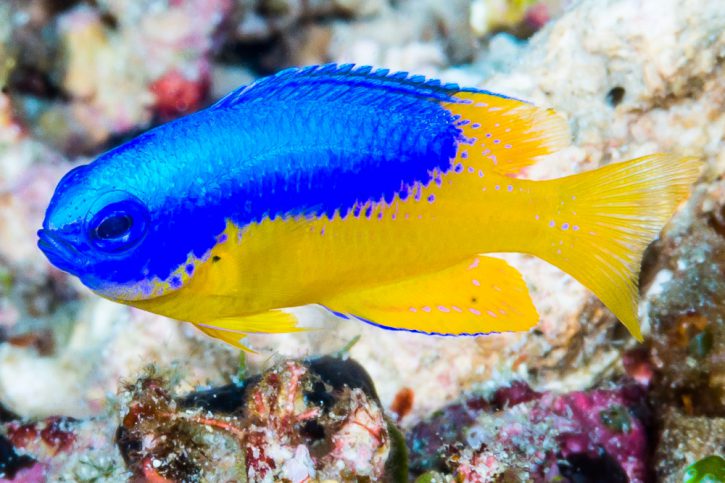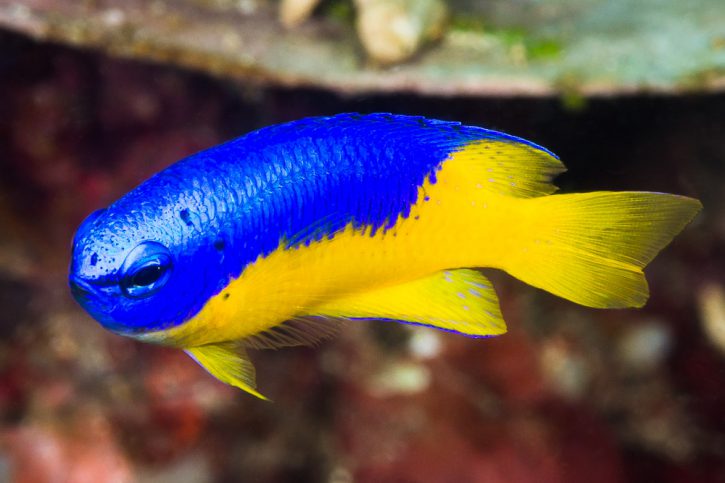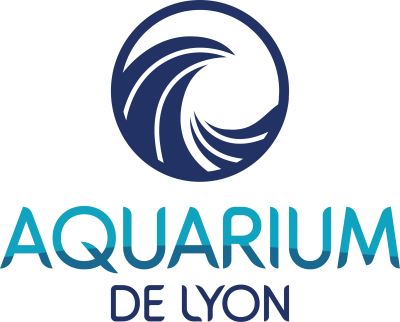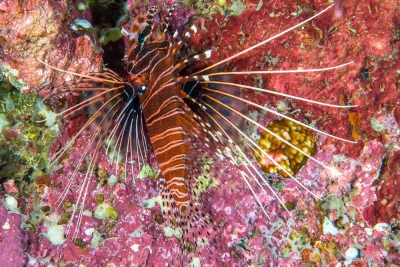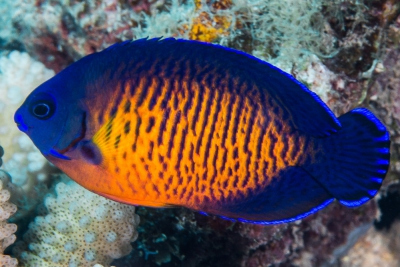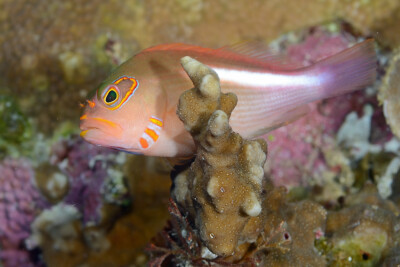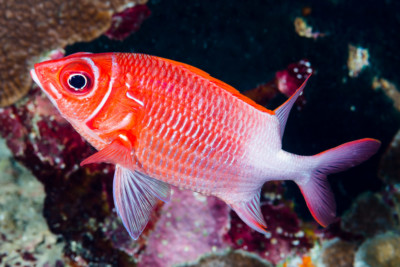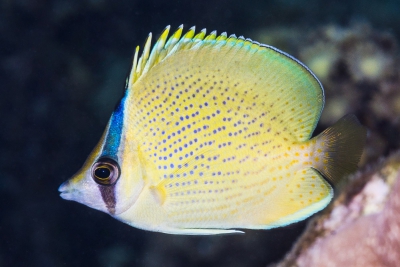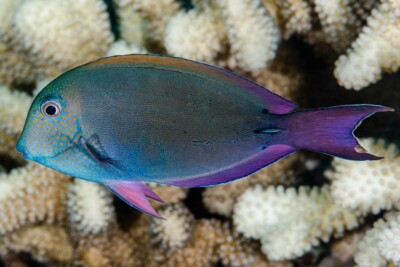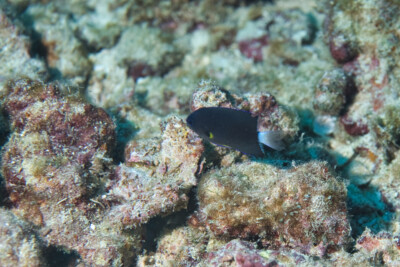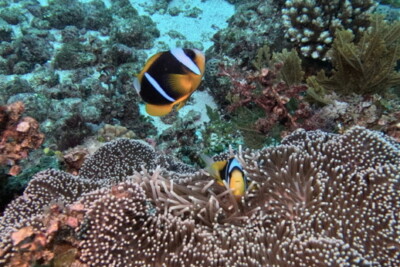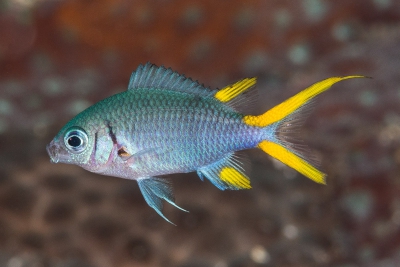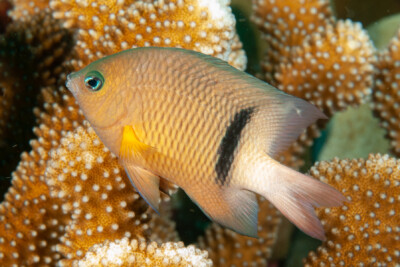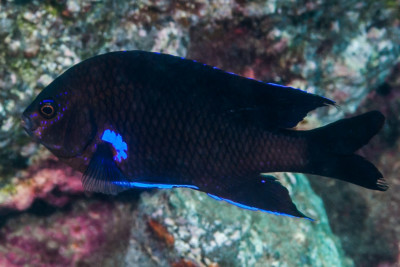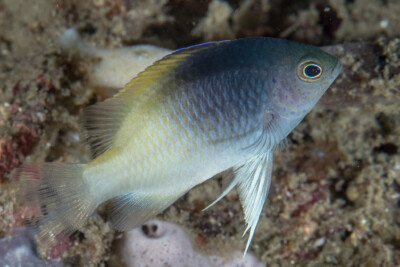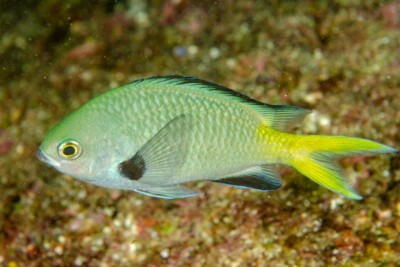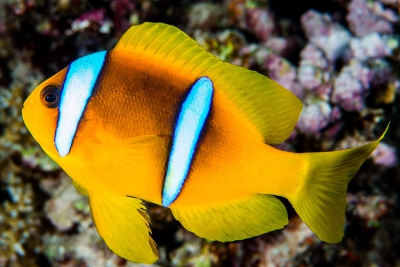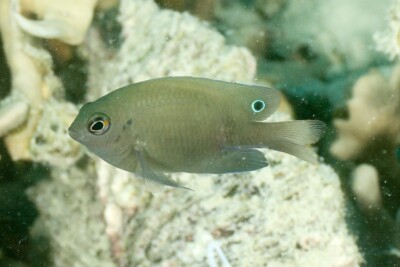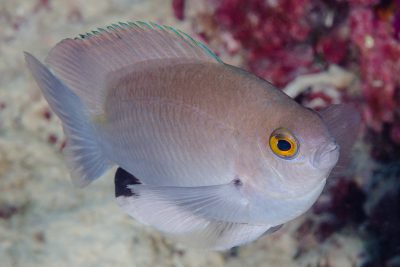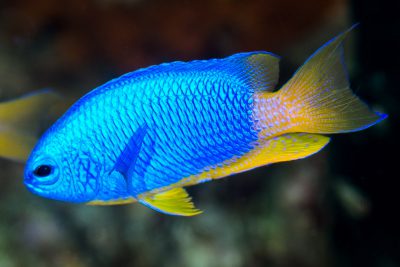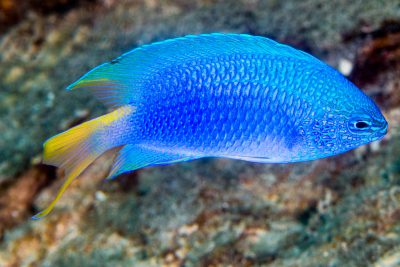goldbelly damsel
| Family | Pomacentridae |
|---|---|
| Genus | Pomacentrus |
| IUCN category (World) | LC |
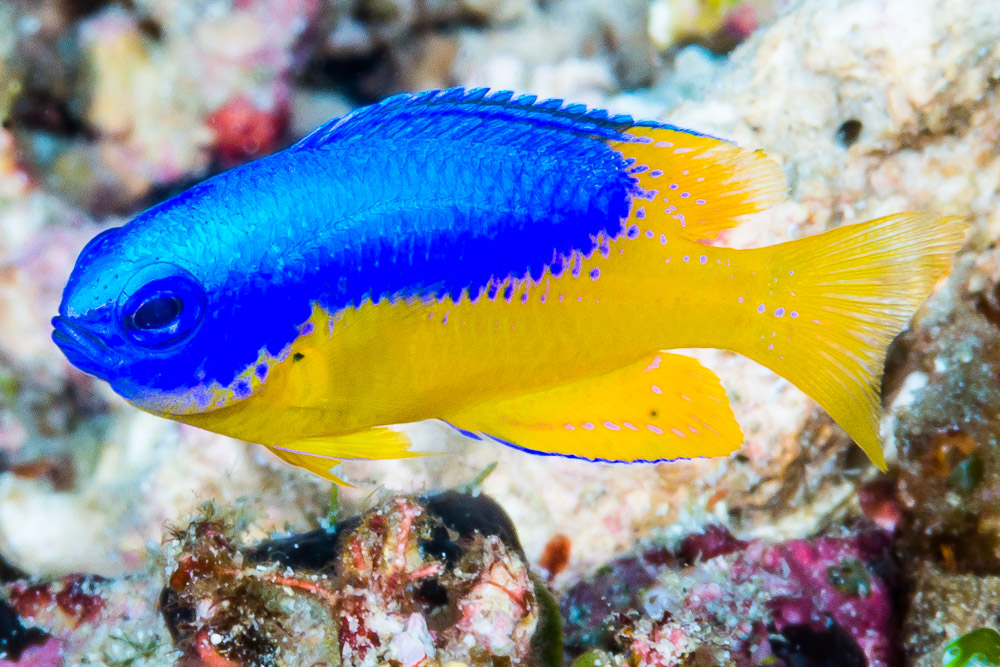

Introduction
Pomacentrus auriventris, commonly known as goldbelly damsel, is a little salt water fish.
This sheet is currently being prepared. The texts currently proposed come from our data model or are being drafted. To request priority for this content, you can write to us HERE.
Who is it?
Morphology
-
Average size4 cm
-
Maximum size5.5 cm
-
Longevity5 year
-
Average size4 cm
-
Maximum size5.5 cm
-
Longevity5 year
How to recognize This fish ?
The goldbelly damsel measures between 4 and 5.5 cm. Given its small size, this species is commonly referred to as a "dwarf" animal. This fish is bicolore with a predominantly jaune and bleu body.
Behaviour & Life cycle
-
dietomnivorous
-
Sociabilityliving in small groups
-
territorialNo
-
Way of livingdiurnal
The goldbelly damsel is a fish living in small groups. This species is omnivorous . Measuring only a few centimeters, this small species tends to be discreet and hide in the presence of larger neighbors.
Although the goldbelly damsel is non-territorial, it is sometimes aggressive towards other species.
Reproduction
-
Reproductionovipare qui pond sur substrat découvert
-
Hermaphroditeprotogynous
The goldbelly damsel is a fish ovipare qui pond sur substrat découvert. always born female. Growing up, individuals will change sex to become male, this is called successive hermaphroditism of the protogynous type. This fish protects its eggs from nearby predators.
Harmless species
This species does not represent any particular threats to humans when encountered in its natural environment.
Origin and distribution
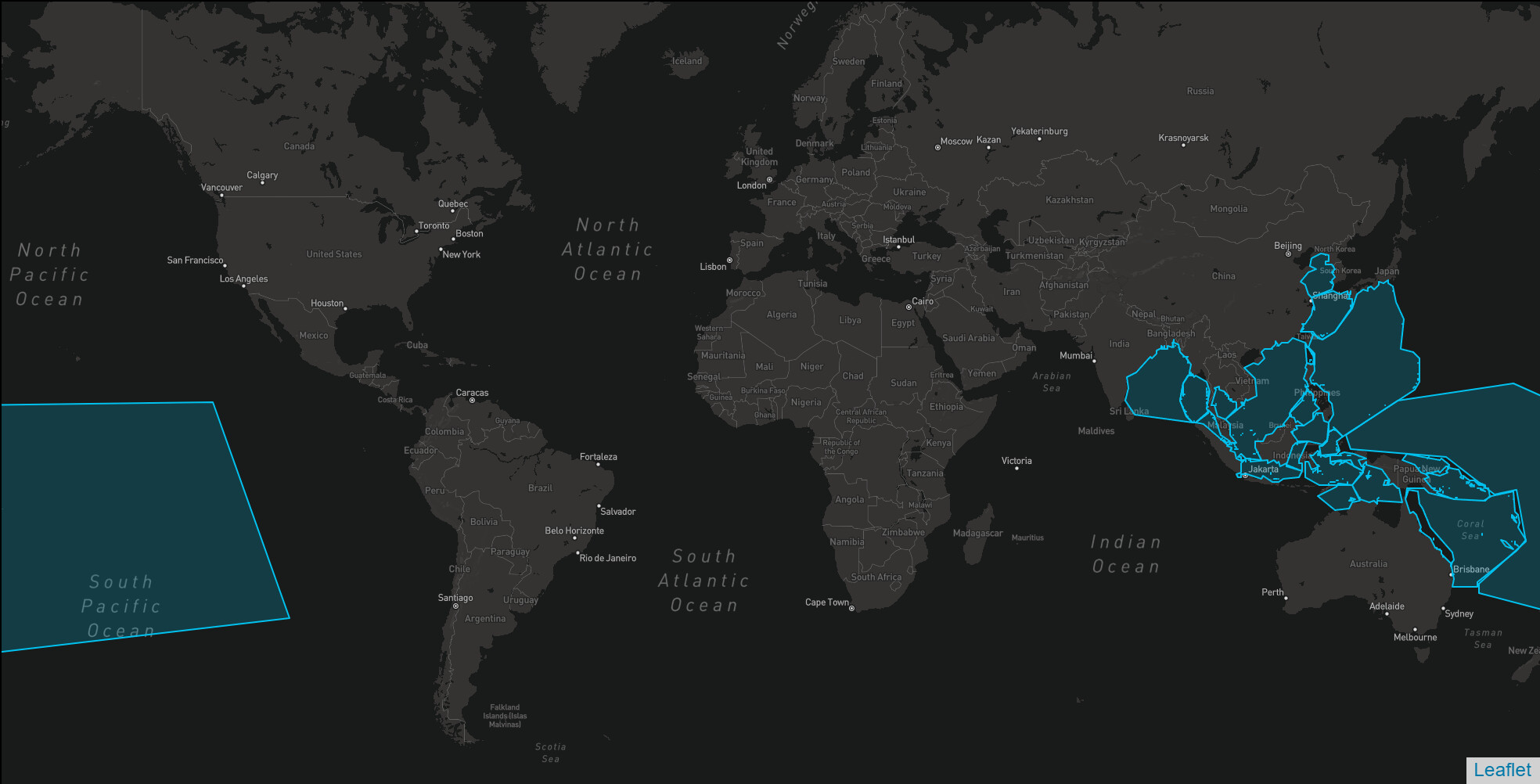
What is its habitat?
Natural environment characteristics
-
Temperature28 - 29 °C
-
Depth2 - 35 m
Biotope presentation
The goldbelly damsel is most often found at a depth between 2m and 35m. However, it is not impossible to find this species at other depths.
Species of the same biotope
To go further
Sources & Contributions
Participation & Validation
The Fishipedia team and specialist contributors are committed to providing high-quality content. However, although the information comes from scientific sources or testimonials from specialists, the cards may contain inaccuracies.

Adrien Falzon
Translation
Translation done with the valuable contribution of our translators, who make this information available to a wider audience. We sincerely thank them for their commitment.
Scientific partners
Tags
Species of the same family
Same genus
Species of the same biotope
